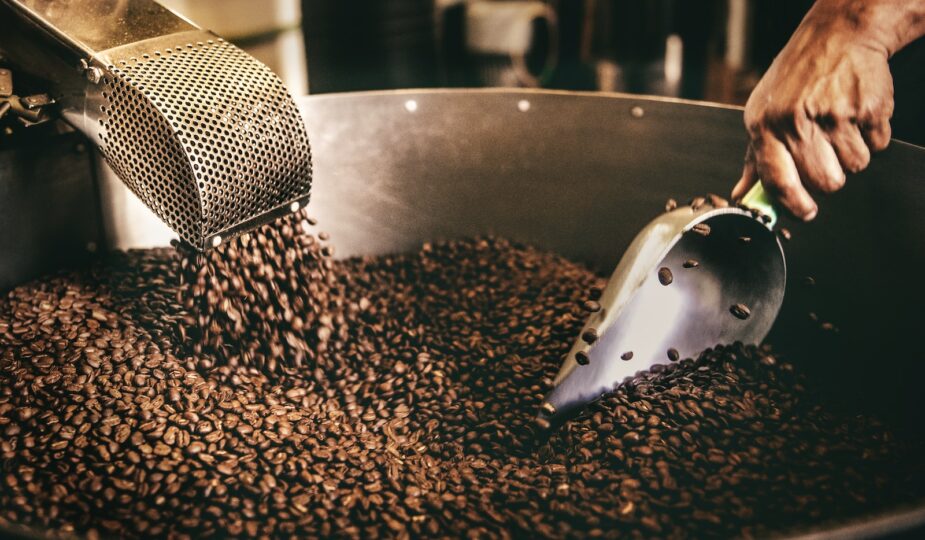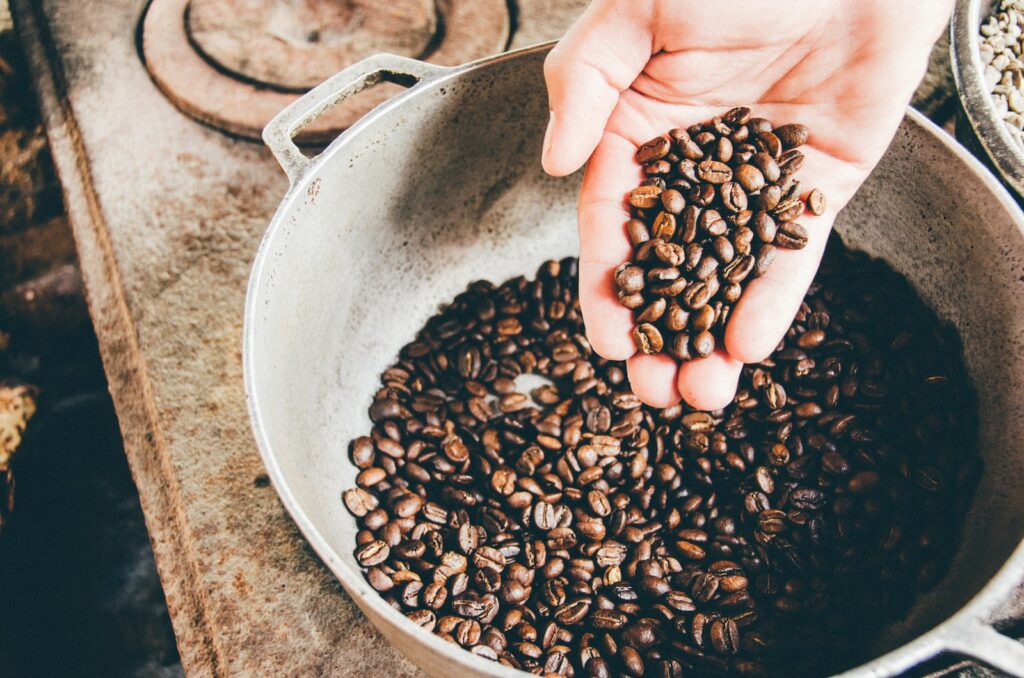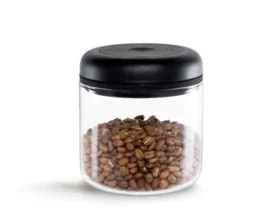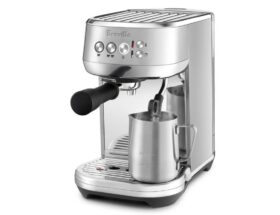
The Art of Coffee Blending: Creating Unique Coffee Roasts at Home
Welcome to the captivating world of coffee blending, where the alchemy of flavors and aromas unfolds right in your kitchen. In this exploration, we delve into the heart of coffee craftsmanship and the sheer delight of crafting your own blends.
Coffee blends are more than just a trend; they are an art form. A meticulously crafted blend can capture the essence of different coffee beans, roast levels, and flavor profiles, resulting in a cup that’s uniquely yours. Whether you’re a coffee connoisseur seeking the perfect house blend or a curious enthusiast yearning to create distinctive coffee roasts, this journey is for you.
Discover the science behind blending, learn the secrets of a house blend, and embark on a quest to create blends that tantalize your taste buds. We’ll also explore the personalized brewing methods that bring out the best in your creations.
Come, let’s unlock the secrets of coffee blending, one bean at a time, and savor the unparalleled satisfaction of sipping your signature blend.
Table of Contents
The Basics of Coffee Blending
Coffee blending is an intricate art, where beans of different origins, roast levels, and flavor profiles are harmoniously combined to create a balanced and unique brew. It’s not just about mixing coffee beans; it’s about composing a symphony of tastes that engage the palate in a delightful dance of flavors.
Understanding the significance of coffee blending is essential. Blending is the key to achieving consistency in taste and quality. It allows roasters and coffee enthusiasts to fine-tune the characteristics of a cup. By combining beans with varying attributes, you can create a more complex and rich flavor profile that is greater than the sum of its parts.
A Brief History of Coffee Blends
Coffee blending is not a recent innovation; it has been practiced for centuries. Historically, blending served various purposes, from extending the availability of coffee during shortages to enhancing its flavor. In the 19th century, coffee blends gained popularity in Europe and became a symbol of refinement.
Today, coffee blends are enjoyed worldwide, with a rich history and cultural significance. They provide a canvas for coffee roasters to showcase their expertise and for coffee enthusiasts to explore a vast array of taste experiences.
The Science Behind Blending
Blending is not a random mix-and-match exercise; it’s a science. It involves a deep understanding of the chemical and physical properties of coffee beans. Beans from different regions, with distinct densities, moisture levels, and chemical compositions, must be carefully balanced to create a harmonious blend.
The blending process also considers roast levels, as varying levels can extract different flavors. Darker roasts often contribute smoky and bitter notes, while lighter roasts may bring out bright, acidic characteristics. Achieving the perfect balance requires precise control over the roast profiles of individual beans within the blend.
Factors to Consider When Creating Your Own Blends
Creating your own coffee blends is a journey of discovery. To embark on this journey successfully, consider several essential factors:
1. Bean Selection: Start with high-quality coffee beans. Experiment with beans from different origins, each with its unique flavor profile.
2. Roast Levels: Understand the roast levels that suit your taste. Light, medium, and dark roasts each offer distinct flavor experiences.
3. Flavor Balancing: Learn how to balance acidity, body, and aroma in your blend. Tinkering with ratios can result in a blend that’s bright, full-bodied, or aromatic, depending on your preferences.
4. Consistency: Consistency is key to replicating your blend. Document the proportions and roasting profiles meticulously to ensure the same great taste every time.
Mastering the basics of coffee blending is the first step towards becoming a skilled home barista and a connoisseur of your own unique coffee creations.

Crafting Your House Blend
A “house blend” is a staple in the world of coffee. It’s the signature brew of a coffee shop or a unique concoction crafted by coffee enthusiasts for daily enjoyment. A house blend is the go-to coffee, the one that represents the essence of a coffee establishment or your personal taste. It’s the coffee that regulars ask for by name.
House blends are known for their well-balanced and versatile nature. They are designed to appeal to a broad range of coffee drinkers, striking a harmonious equilibrium between different flavor notes. House blends are often a blend of various coffee beans that, when combined, create a consistent and delicious cup with each brew.
Characteristics of a Typical House Blend
Typically, a house blend is characterized by the following attributes:
1. Balance: House blends strike a balance between acidity, body, and aroma. They neither overwhelm nor underwhelm the palate, offering a well-rounded taste experience.
2. Consistency: House blends are known for their unwavering consistency. Whether you brew a cup in the morning or the afternoon, you can expect the same satisfying flavor each time.
3. Versatility: These blends are versatile and suitable for various brewing methods, including drip, espresso, and French press.
4. Broad Appeal: House blends are crowd-pleasers, designed to cater to a wide audience, from casual coffee drinkers to aficionados.
Tips for Creating Your Signature House Blend
If you’re eager to craft your own house blend, here are some tips to get you started:
1. Bean Selection: Choose a combination of coffee beans that complement each other. Experiment with beans from different regions, each contributing a unique flavor element.
2. Roast Levels: Find the right roast levels that suit your taste preferences and aim for consistency in your roasting process to maintain the blend’s profile.
3. Consistency is Key: Document the ratios of each bean and roast level, ensuring you can replicate your blend consistently over time.
4. Taste and Adjust: Continuously taste your blend and make adjustments as needed. The pursuit of your perfect house blend is an ongoing journey of exploration and refinement.
Creating your house blend is a rewarding venture, allowing you to tailor your coffee to your exact preferences. It’s your opportunity to craft a blend that represents your unique coffee identity and offers a taste experience that keeps you and your guests coming back for more.
| Coffee Bean | Origin | Flavor Profile | Roast Level | Best Brewing Method |
|---|---|---|---|---|
| Arabica | Central America | Fruity, Floral, Bright Acidity | Light to Medium | Pour-over, Aeropress |
| Robusta | Africa | Bold, Earthy, Nutty | Medium to Dark | Espresso, French Press |
| Ethiopian Yirgacheffe | Ethiopia | Citrus, Floral, Tea-like | Light | Chemex, V60 |
| Sumatra Mandheling | Indonesia | Earthy, Herbal, Full-bodied | Medium to Dark | French Press, Espresso |
The Art of Creating Unique Blends
Coffee blending is where creativity meets craftsmanship. It’s the canvas upon which you can paint your coffee masterpiece by experimenting with various coffee bean combinations. Different beans from diverse origins offer a spectrum of flavors, allowing you to create truly unique blends that tantalize your taste buds.
When experimenting with bean combinations, consider the following:
1. Origin Varieties: Try beans from different countries and regions. Each origin brings its own distinctive flavor characteristics, influenced by climate, soil, and processing methods.
2. Bean Types: Explore different bean types like Arabica, Robusta, or exotic specialty beans. These beans have distinct flavor profiles and can add complexity to your blend.
Mastering Roast Levels and Their Impact
The roast level of coffee beans significantly influences the flavor and aroma of your blend. Understanding roast levels and their impact is crucial in creating a well-balanced blend. Here’s how different roast levels affect your coffee:
1. Light Roast: Light roasts preserve the inherent flavors of the beans, resulting in bright acidity and a distinct origin character. They are perfect for highlighting unique bean qualities.
2. Medium Roast: Medium roasts strike a balance between the bean’s origin flavors and the development of roast characteristics. You can expect a pleasant acidity and body with medium roasts.
3. Dark Roast: Dark roasts bring out smoky, earthy, and roasted notes. They are known for their bold and robust flavors, often with reduced acidity.
Blending different roast levels allows you to fine-tune the taste of your coffee blend. Combining a light roast for acidity and a dark roast for body, for example, can create a blend that’s both complex and satisfying.
Balancing Acidity, Body, and Aroma
The art of coffee blending extends to balancing three essential elements: acidity, body, and aroma.
1. Acidity: Acidity in coffee is not sourness but a bright, lively characteristic. It adds vibrancy to the flavor profile. Different beans contribute varying levels of acidity, and it’s crucial to balance this aspect in your blend.
2. Body: Coffee body refers to its tactile sensation, ranging from light to full. Some beans offer a silky, smooth body, while others provide a more robust, heavy body. Balancing body ensures your blend suits your personal preferences.
3. Aroma: The aroma of coffee can be fruity, floral, nutty, or earthy. A well-balanced blend should have an inviting aroma that complements the flavor profile.
Experiment with bean combinations, roast levels, and ratios to achieve the perfect balance of acidity, body, and aroma in your blend. This balancing act is where the true magic of coffee blending happens, creating a cup that’s a harmonious symphony of sensory delights.
Choosing the Right Brewing Methods for Your Blend
Once you’ve meticulously crafted your unique coffee blend, it’s time to ensure that its flavors are perfectly showcased through the right brewing methods. Different brewing techniques bring out distinct characteristics in your coffee, so selecting the right one is crucial.
Drip Coffee: Drip brewing is excellent for showcasing the balanced and subtle flavors of your blend. It provides a clean and straightforward taste that’s ideal for daily sipping.
Espresso brewing intensifies the richness and body of your coffee. If your blend has a bold flavor profile and a strong aroma, it’s a great choice for espresso shots and espresso-based drinks like lattes and cappuccinos.
French Press: French press brewing brings out the full-bodied and aromatic aspects of your blend. If your blend has a silky mouthfeel and intricate aroma, it’s a perfect match for this method.
| Method | Grind Size | Water Temperature | Extraction Time | Best for Blends |
|---|---|---|---|---|
| Drip Coffee | Medium | 195-205°F (90-96°C) | 2-4 minutes | Well-balanced blends with medium roast |
| Espresso | Fine | 195-205°F (90-96°C) | 25-30 seconds | Blends with bold, complex flavors and dark roasts |
| French Press | Coarse | 195-205°F (90-96°C) | 4 minutes | Blends with full body, aromatic profiles, and medium to dark roasts |
Grinding and Storing Your Custom Blends
The grind size of your coffee beans plays a crucial role in the brewing process. The ideal grind size varies based on your chosen brewing method:
Coarse Grind: Suitable for French press and cold brew methods, a coarse grind ensures a smoother extraction process and prevents over-extraction, resulting in a clean cup with minimal sediment.
Medium Grind: This versatile grind works well for drip coffee and pour-over methods, offering balanced extraction and a well-rounded taste experience.
Fine Grind: If you prefer espresso or Aeropress brewing, a fine grind is your choice. It allows for a more comprehensive extraction, capturing the boldness and richness of your blend.
Storing your custom coffee blends is essential to maintain freshness. Use airtight containers to protect your coffee from exposure to air, light, and moisture. Store them in a cool, dark place to ensure your blend retains its flavor over time.
Expert Tips for a Perfect Cup of Your Blend
Here are some expert tips to ensure that every cup of your custom blend is a masterpiece:
1. Brew with Fresh Water: Use fresh, cold water for brewing to avoid any off-flavors from stale or impure water.
2. Pay Attention to Water Temperature: Brew at the recommended temperature for your chosen method, as it affects the extraction process and taste quality.
3. Experiment with Brew Time: Don’t be afraid to experiment with the brew time to fine-tune the flavor intensity. Shorter brewing times result in a milder cup, while longer times produce a bolder taste.
Choosing the right brewing method, grind size, and following expert tips will elevate the coffee experience with your unique blend. It’s a personalized journey that allows you to appreciate the craftsmanship that goes into each cup you savor.
Conclusion
The art of blending coffee is a journey of passion, creativity, and self-expression. It’s the magic of turning raw coffee beans into a symphony of flavors that dance on your taste buds. Whether you’re crafting your signature house blend, experimenting with unique flavor combinations, or perfecting your brewing techniques, coffee blending offers an endlessly rewarding pursuit.
As you delve deeper into the world of coffee blending, you’ll discover that it’s more than just a hobby; it’s a genuine art form. Your blend becomes an extension of your palate, reflecting your unique preferences and coffee identity.
Remember, coffee blending is a deeply personal experience. There are no hard and fast rules, only guidelines to help you on your way. Embrace the journey, and enjoy the process of creating, tasting, and refining your unique coffee blends. Share your creations with friends and family, and savor the satisfaction of seeing their eyes light up as they savor your coffee artistry.
So, grab your beans, explore your palate, and start crafting your own coffee blends. Your coffee adventure awaits, and it’s a journey that will awaken your senses, inspire your creativity, and fill your cup with endless possibilities.









